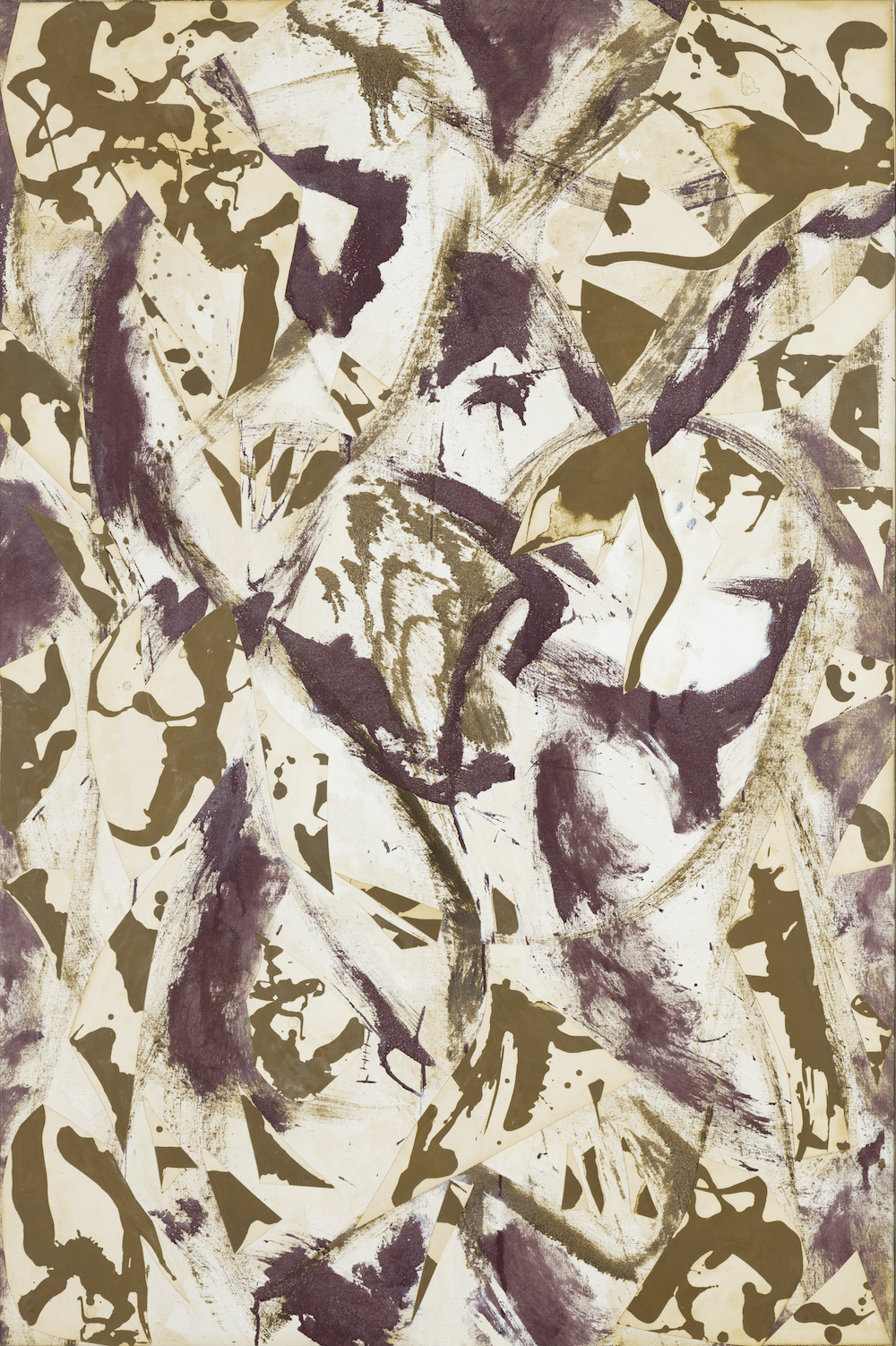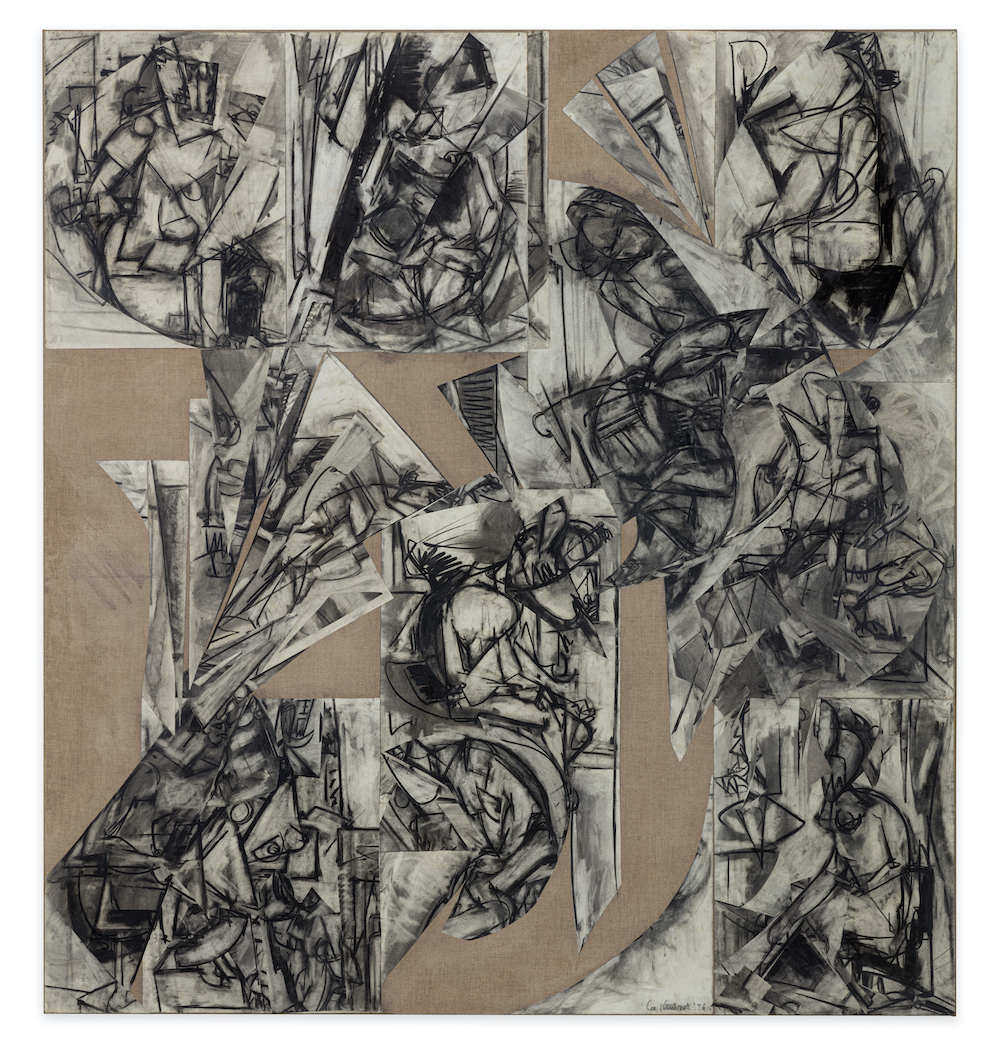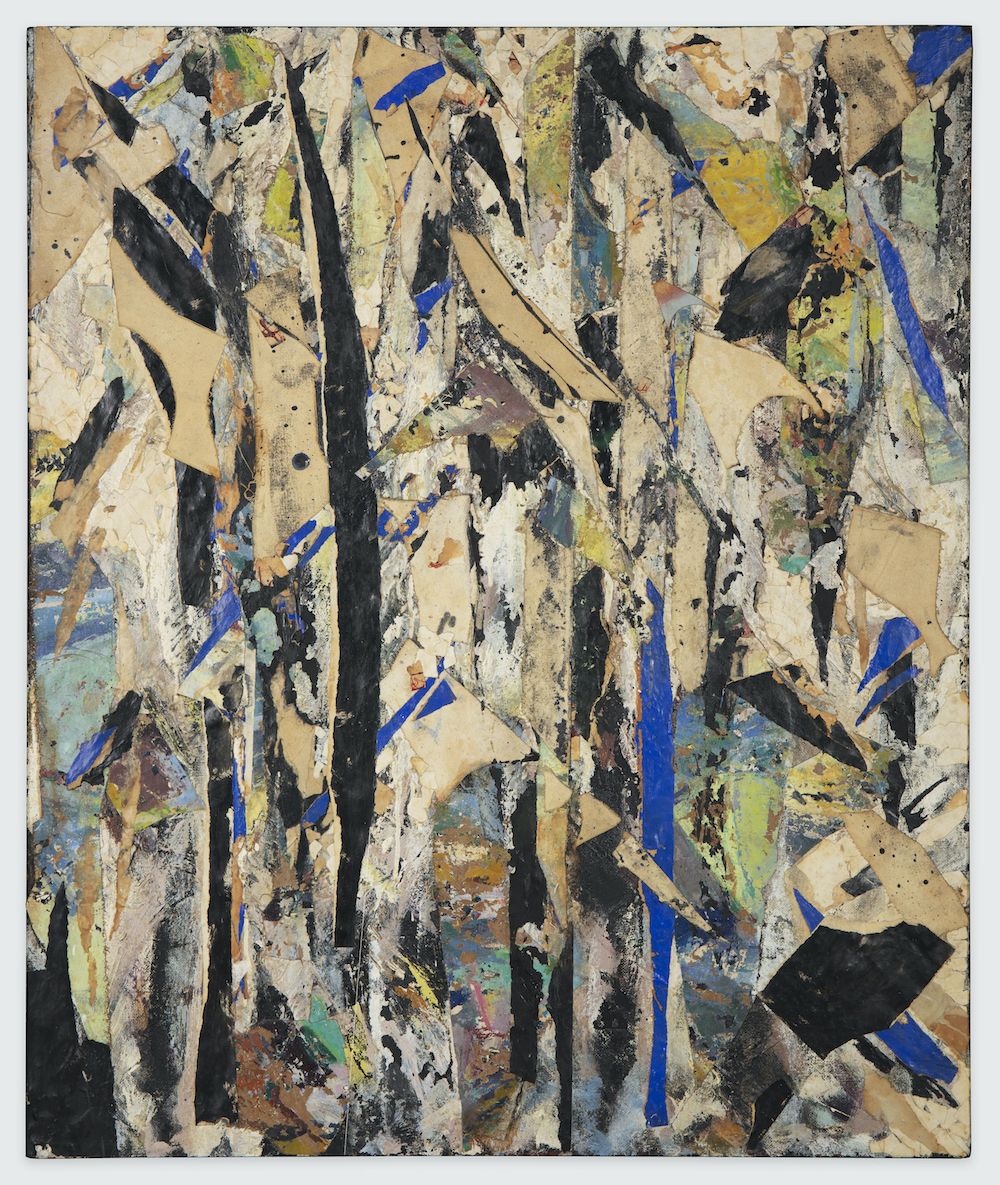Lee Krasner, one of the most phenomenally gifted painters of the twentieth century, often would create through destruction. She had a habit of stripping previous works for materials—fractions of forgotten sketches, swaths of unused paper, scraps of canvas from her own paintings as well as those of her husband, Jackson Pollock—that she would then reconstitute as elements of her masterful, distinctive collages. A new show devoted to her endeavors in this mode, “Lee Krasner: Collage Paintings 1938–1981,” will be on view at Kasmin Gallery through April 24. A selection of images from the exhibition appears below.

Lee Krasner, Stretched Yellow, 1955, oil with paper on canvas, 82 1/2 x 57 3/4″. © 2021 Pollock-Krasner Foundation / Artists Rights Society (ARS), New York. Collection of Carolyn Campagna Kleefeld Contemporary Art Museum of California State University, Long Beach. Gift of the Gordon F. Hampton Foundation, through Wesley G. Hampton, Roger K. Hampton, and Katharine H. Shenk. Courtesy of Kasmin Gallery.

Lee Krasner, The Farthest Point, 1981, oil and paper collage on canvas, 56 3/4 x 37 1/4″. © 2021 Pollock-Krasner Foundation / Artists Rights Society (ARS), New York. Courtesy of Kasmin Gallery.

Lee Krasner, Imperfect Indicative, 1976, collage on canvas, 78 x 72″. © 2021 Pollock-Krasner Foundation / Artists Rights Society (ARS), New York. Courtesy of Kasmin Gallery.

Lee Krasner, Seated Figure, 1938–1939, oil and collage on linen, 25 x 18″. © 2021 Pollock-Krasner Foundation / Artists Rights Society (ARS), New York. Courtesy of Kasmin Gallery.

Lee Krasner, Untitled, 1954, oil, glue, canvas, and paper collage on Masonite, 48 x 40″. © 2021 Pollock-Krasner Foundation / Artists Rights Society (ARS), New York. Private collection, New York City. Courtesy of Kasmin Gallery.

View of “Lee Krasner: Collage Paintings 1938–1981,” 2021, Kasmin Gallery, New York. Photo: Diego Flores.
“Lee Krasner: Collage Paintings 1938–1981” will be on view at Kasmin Gallery through April 24.
from The Paris Review https://ift.tt/31j0Eil
Comments
Post a Comment